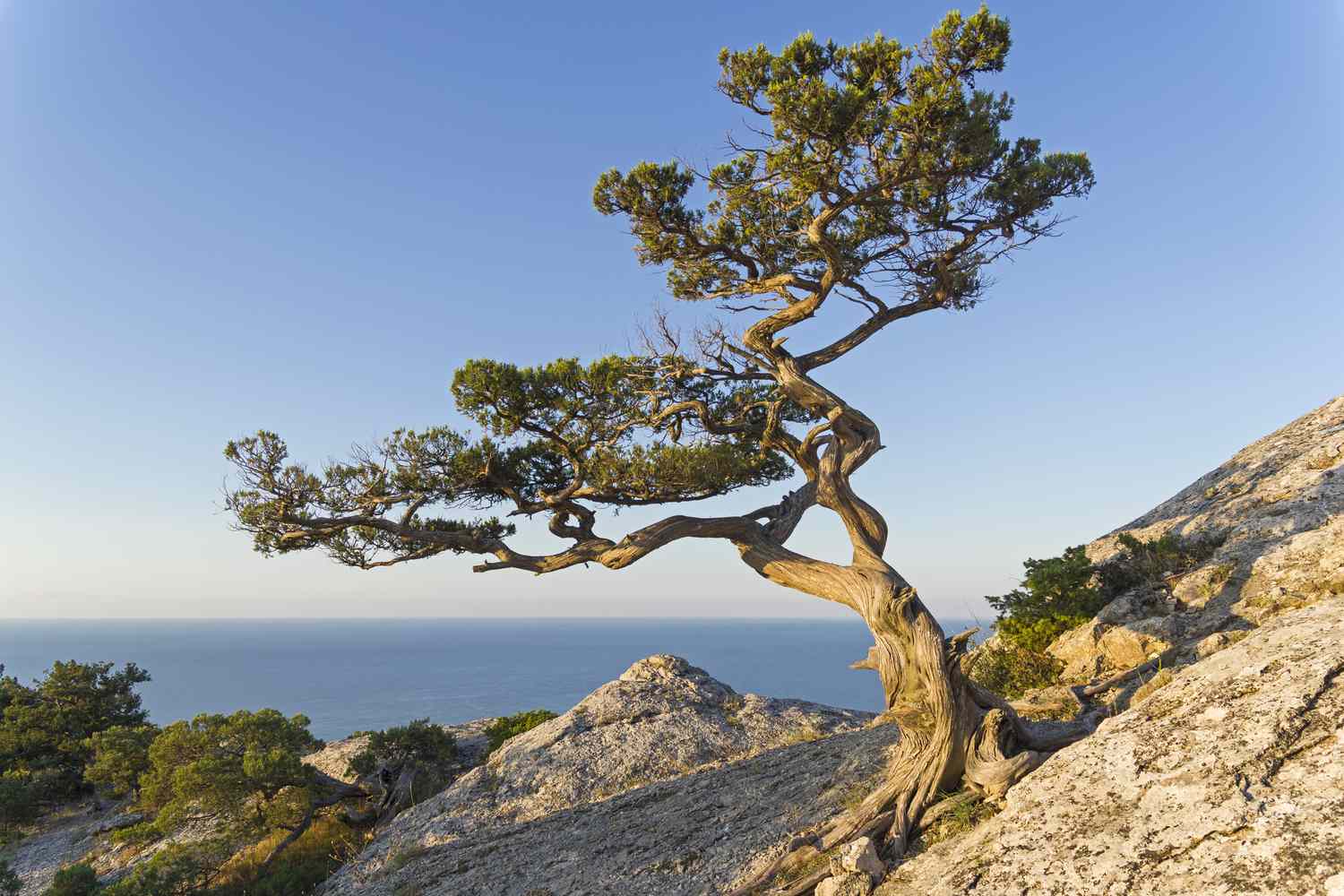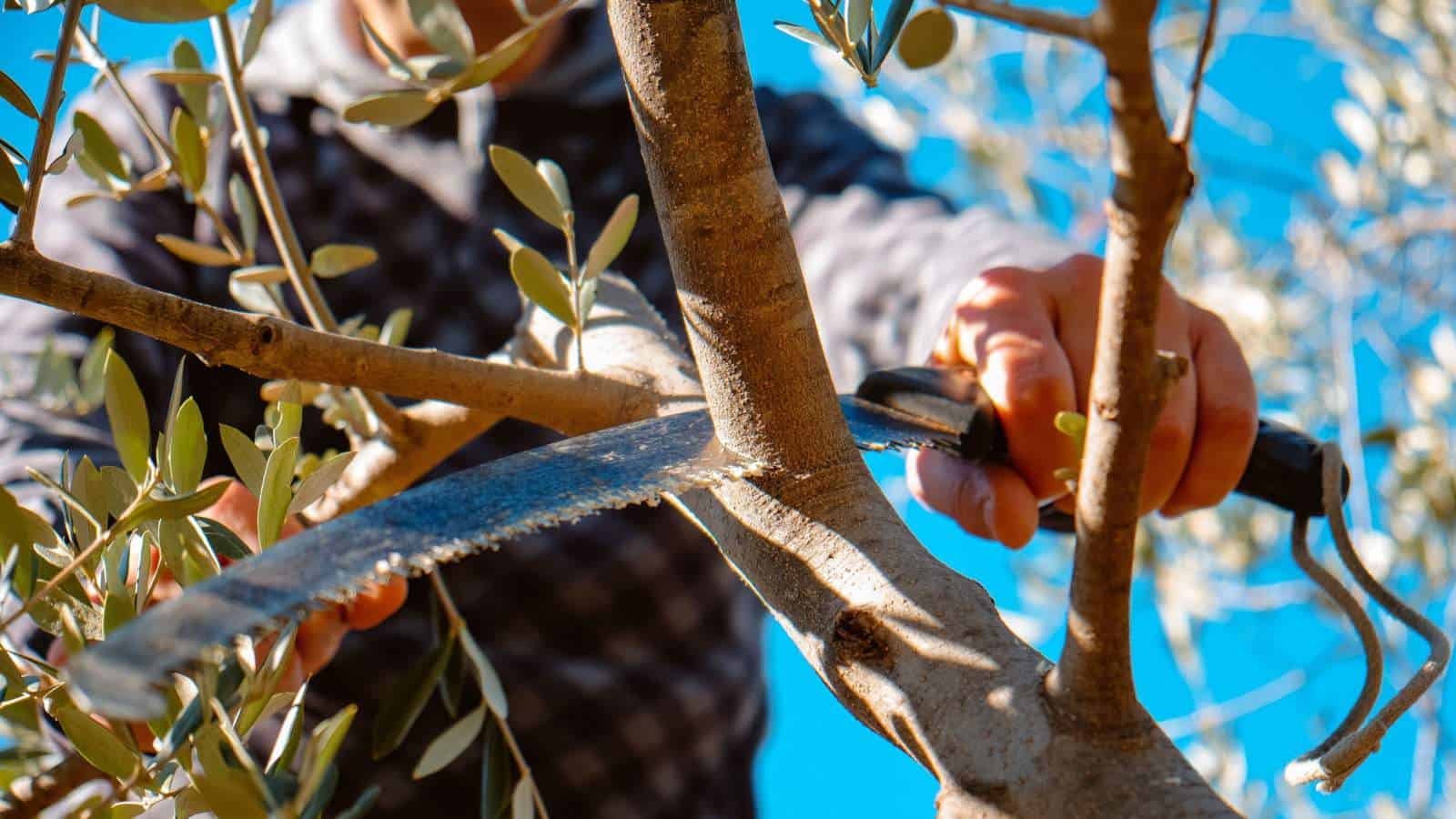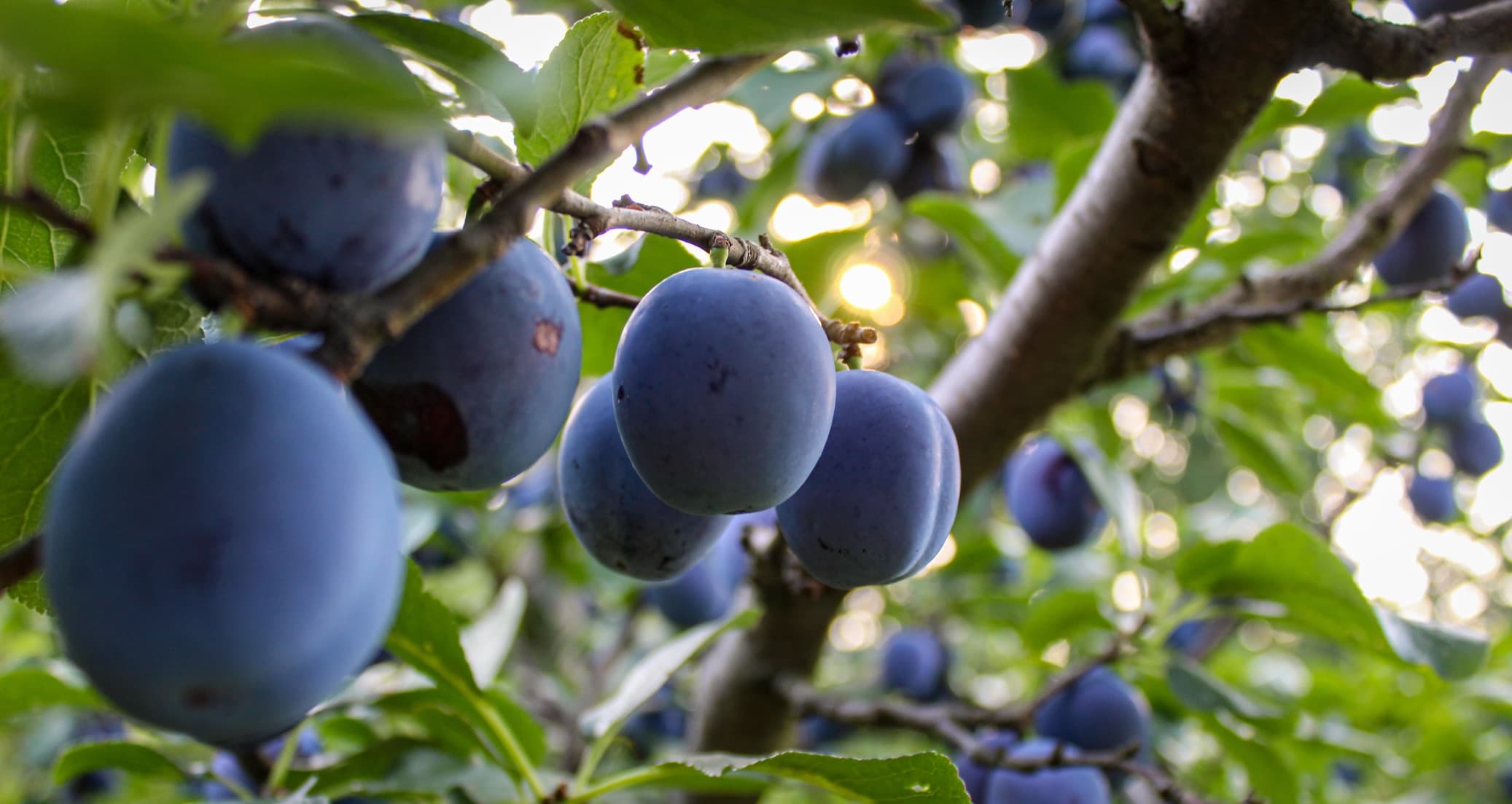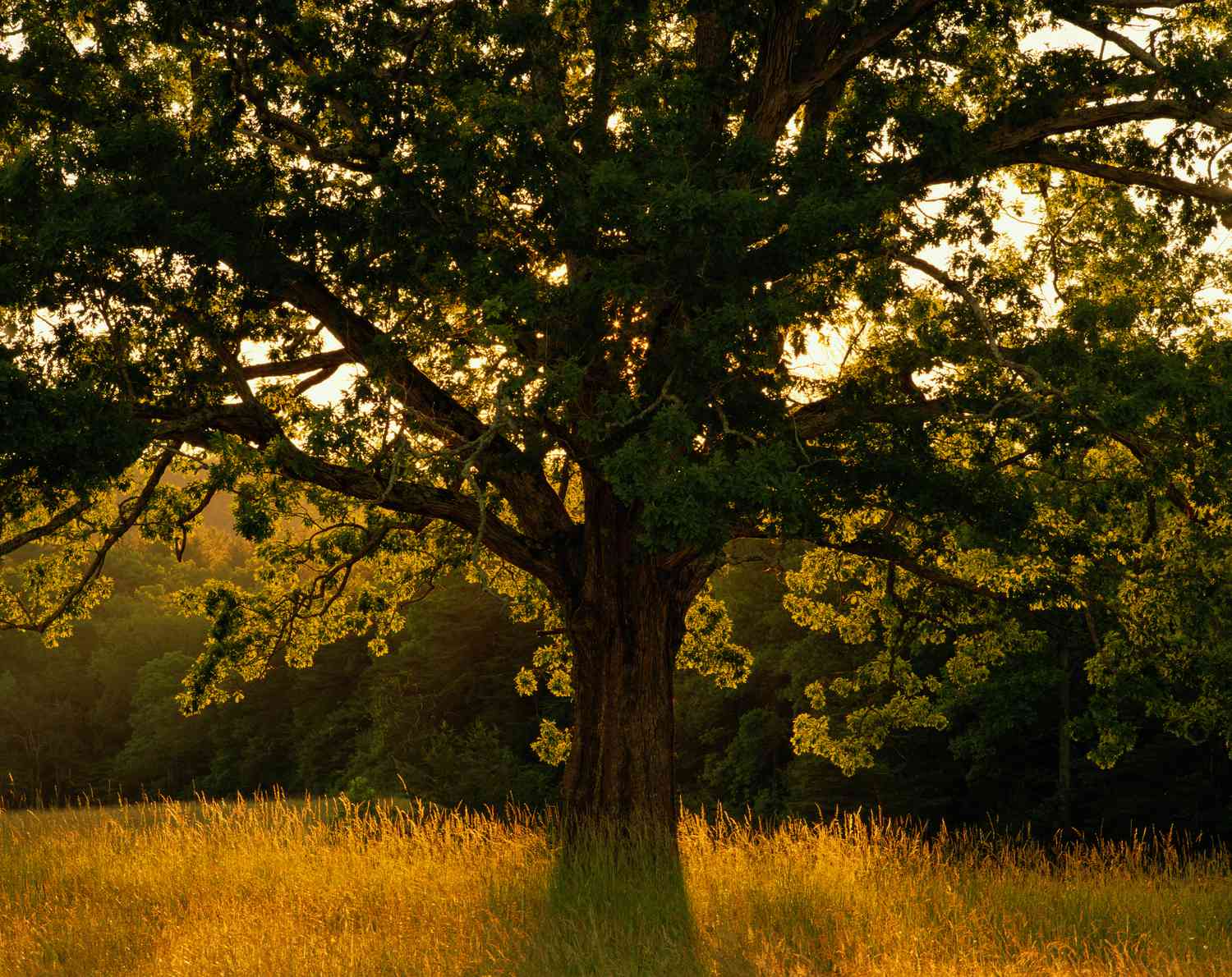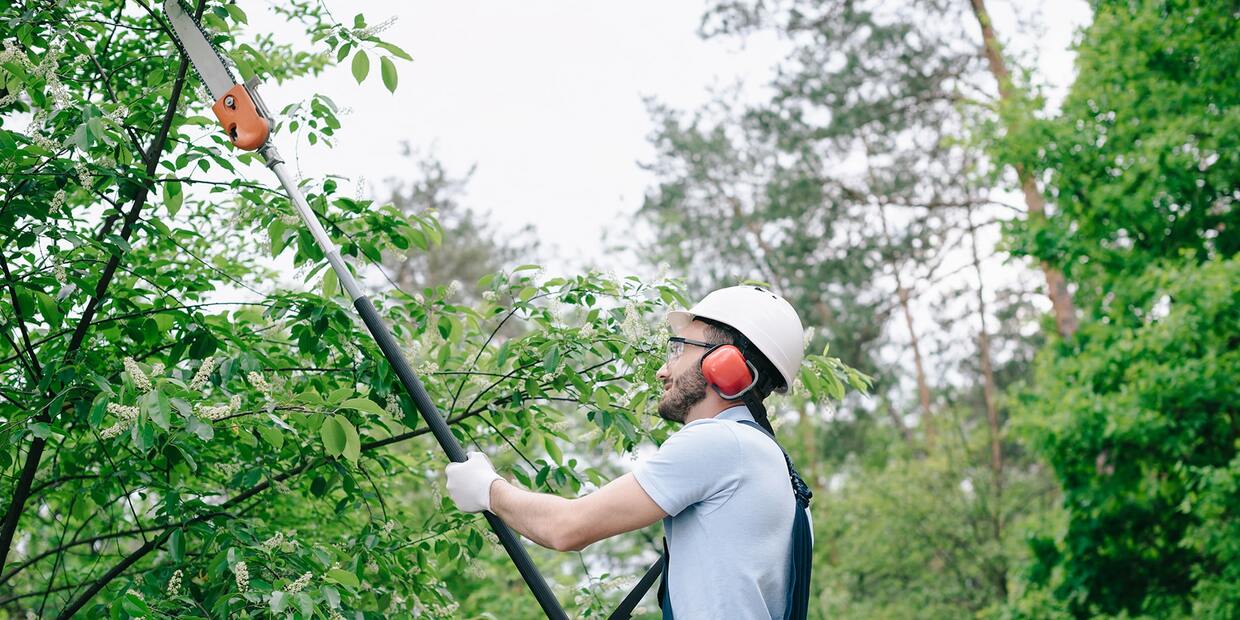Home>Gardening Techniques>Plant Care>How To Trim A Juniper Bonsai Tree


Plant Care
How To Trim A Juniper Bonsai Tree
Modified: February 9, 2024
Learn how to properly trim a juniper bonsai tree with our expert plant care tips. Ensure the health and longevity of your bonsai with our step-by-step guide.
(Many of the links in this article redirect to a specific reviewed product. Your purchase of these products through affiliate links helps to generate commission for Chicagolandgardening.com, at no extra cost. Learn more)
Table of Contents
Introduction
Welcome to the world of Juniper Bonsai trees! These beautiful miniature trees are not only a delight for the eyes but also require proper care and maintenance to thrive. One crucial aspect of caring for a Juniper Bonsai is regular trimming. Trimming helps maintain the shape and health of the tree, promotes vigorous growth, and allows for artistic shaping.
In this comprehensive guide, we will take you step by step through the process of trimming a Juniper Bonsai tree. We will discuss the tools and materials you’ll need, the best time for trimming, basic pruning techniques, and how to shape the foliage to create a stunning aesthetic appeal.
But before we dive into the world of trimming, it’s important to understand the significance of Juniper Bonsai trees and their unique characteristics. Junipers are evergreen coniferous trees that belong to the cypress family. They are native to many regions around the world, including North America, Europe, and Asia.
Juniper Bonsai trees have become popular in the art of Bonsai due to their durability, adaptability, and striking foliage. These trees have small, scale-like leaves and distinctive reddish-brown bark that adds to their visual appeal. With their ability to withstand harsh environments and low maintenance needs, Juniper Bonsai trees are an excellent choice for both beginners and experienced Bonsai enthusiasts.
Now that we have a better understanding of Juniper Bonsai trees, let’s explore the tools and materials you’ll need to successfully trim and shape these beautiful creations.
Tools and Materials Needed
Before you begin trimming your Juniper Bonsai tree, it’s important to gather the necessary tools and materials to ensure a successful and efficient pruning session. Here are the essential items you’ll need:
- Pruning shears: These are sharp, handheld tools specifically designed for trimming and shaping plants. Look for a pair with bypass blades, as they provide clean and precise cuts.
- Concave cutters: These specialized cutters have a concave shape that helps create a smooth and natural-looking cut when removing larger branches.
- Wire cutters: If your Juniper Bonsai requires some wiring to shape its branches, wire cutters are essential for removing the wire without damaging the tree.
- Root rake: A root rake is used to gently comb through the tree’s root system, loosening and untangling any compacted roots. This tool is crucial for maintaining the tree’s overall health.
- Bonsai wire: If you plan on wiring and shaping your Juniper Bonsai, you’ll need a roll of bonsai wire. Choose a wire that is strong enough to hold the branches in place but not too thick that it damages the tree.
- Bonsai soil: Juniper Bonsai trees require well-draining soil to prevent root rot. Look for a bonsai-specific soil mix that provides adequate drainage and aeration for the tree’s roots.
- Watering can: A watering can with a narrow spout is ideal for watering your Juniper Bonsai, allowing you to deliver a gentle stream of water to the soil without disturbing the tree’s delicate roots.
- Training pots or bonsai pots: Depending on the size and stage of your Juniper Bonsai, you’ll need appropriate pots for repotting and training the tree. Make sure the pots have drainage holes to prevent waterlogging.
- Bonsai fertilizer: To ensure your Juniper Bonsai receives the necessary nutrients, invest in a quality bonsai fertilizer. This will help promote healthy growth and vibrant foliage.
Having these essential tools and materials at your disposal will make the trimming process much easier and more enjoyable. Once you have everything ready, it’s time to move on to the next step: assessing the tree before trimming.
Step 1: Assessing the Tree
Before you begin trimming your Juniper Bonsai tree, it’s crucial to assess its overall health and structure. This step will help you determine which areas need attention and guide your trimming decisions. Here’s how to assess your tree:
- Examine the foliage: Take a close look at the foliage of your Juniper Bonsai. Look for any dead, yellowing, or diseased leaves. Remove these leaves carefully using your pruning shears to encourage healthy growth.
- Inspect the branches: Check the branches for any signs of damage, such as cracks, splits, or crossing branches. Remove any damaged branches, as they can hinder the tree’s growth and aesthetics.
- Evaluate the overall shape: Step back and observe the overall shape of your Juniper Bonsai. Look for any areas that appear unbalanced or uneven. This assessment will guide you in creating a well-proportioned and visually appealing shape.
- Consider the tree’s age: The age of your Juniper Bonsai also plays a role in the trimming process. Younger trees may require more aggressive pruning to encourage branching and density. Older trees may only need light maintenance pruning to refine their shape.
- Take note of the tree’s natural features: Juniper Bonsai trees have unique natural characteristics, such as jins (deadwood) and shari (exposed bark). Take note of these features and consider how they can contribute to the overall design and aesthetics of your bonsai.
Remember that each Juniper Bonsai tree is unique, and it’s important to approach the trimming process with a keen eye and a vision for the desired shape. Assessing the tree beforehand will help you make informed decisions and ensure that you achieve the best results.
Once you’ve assessed your Juniper Bonsai tree, it’s time to move on to the next step: choosing the right time for trimming.
Step 2: Choosing the Right Time for Trimming
The timing of trimming plays a vital role in the overall health and success of your Juniper Bonsai tree. By selecting the right time for trimming, you can minimize stress on the tree and promote healthy growth. Here are some key considerations when choosing the right time:
- Spring or early summer: The optimal time for trimming a Juniper Bonsai is during the active growing season, which is typically in the spring or early summer. During this time, the tree is actively producing new growth, making it more resilient to pruning.
- Avoid periods of extreme temperature: It’s important to avoid trimming during periods of extreme temperatures, especially freezing temperatures. Trimming during very cold weather can damage the tree and hinder its recovery.
- Avoid trimming during hot summer months: While trimming in spring or early summer is ideal, it’s best to avoid trimming during the hottest months of summer when the tree is more vulnerable to stress and dehydration.
- Consider the tree’s specific needs: Some Juniper Bonsai varieties may have different growth patterns and requirements. Research your specific Juniper variety to understand its growth habits and determine if there are any unique timing considerations for pruning.
By choosing the right time for trimming, you ensure that your Juniper Bonsai tree has the best chance of recovery and vigorous growth. Once you have determined the ideal timing, you can proceed to the next step: learning the basic pruning techniques.
Step 3: Basic Pruning Techniques
Knowing and applying basic pruning techniques is essential for maintaining the health and shape of your Juniper Bonsai tree. By using the right techniques, you can encourage new growth, improve the tree’s aesthetics, and promote a balanced structure. Here are some fundamental pruning techniques to consider:
- Pinching: Pinching involves the removal of the tips of new shoots or buds to promote branching and density. Use your fingertips or sharp pruning shears to pinch off the tips, taking care not to damage the surrounding foliage.
- Thinning: Thinning consists of selectively removing branches or foliage to improve air circulation and allow light to reach the inner parts of the tree. This technique helps prevent disease and encourages healthy growth.
- Heading back: Heading back involves cutting back the length of a branch to encourage new growth. Make the cut just above a healthy bud or branch junction. This technique helps maintain the shape and compactness of the tree.
- Notching: Notching is a technique used to redirect the tree’s growth by making small cuts on the underside of a branch. This encourages growth in a specific direction and can be useful for shaping the tree.
- Root pruning: If your Juniper Bonsai has become root-bound or has excessive root growth, root pruning is necessary. Carefully remove a portion of the roots, trimming them back to maintain a healthy root system.
When applying these pruning techniques, it’s essential to make clean cuts to minimize damage and promote faster healing. Always use sharp and sterilized pruning tools to prevent the spread of disease.
Remember, practice makes perfect when it comes to pruning techniques. Take your time and observe the tree’s response to each pruning cut. With experience, you’ll develop a better understanding of the tree’s growth patterns and how to shape it most effectively.
Now that you’re familiar with the basic pruning techniques, let’s move on to step 4: trimming the branches of your Juniper Bonsai tree.
Step 4: Trimming the Branches
Trimming the branches of your Juniper Bonsai tree is a critical step in maintaining its overall shape and encouraging healthy growth. By selectively removing certain branches, you can create a visually appealing silhouette and improve the tree’s structure. Here’s how to trim the branches effectively:
- Identify problem areas: Begin by identifying any problem areas in the tree’s branching structure. Look for branches that cross or rub against each other, weak or diseased branches, or branches that disrupt the overall balance of the tree.
- Start with larger branches: Focus on larger branches first, using concave cutters for clean and precise cuts. Make the cut just outside the branch collar, which is the swollen area where the branch connects to the main trunk or another branch. This will promote faster healing and minimize the risk of infection.
- Thin out dense foliage: If your Juniper Bonsai has dense foliage, selectively thin out some branches to allow better airflow and light penetration. This will help prevent disease and encourage new growth on the remaining branches.
- Consider branch angles: Pay attention to the angles at which branches emerge from the trunk. Aim for a balanced and aesthetically pleasing structure by removing branches that grow at awkward angles or disrupt the natural flow of the tree’s form.
- Step back and assess: As you trim the branches, step back frequently to assess the overall shape of the tree. Make adjustments as needed to achieve the desired silhouette and balance.
Remember to take your time with branch trimming and be conservative in your approach. It’s always easier to remove more branches later if needed, but it’s difficult to reverse the effects of over-pruning.
Once you’ve completed the branch trimming, it’s time to move on to step 5: shaping the foliage of your Juniper Bonsai tree.
Step 5: Shaping the Foliage
Shaping the foliage of your Juniper Bonsai tree is a key step in creating a visually appealing and balanced appearance. By selectively pruning and manipulating the foliage, you can shape the tree according to your desired aesthetic. Here’s how to shape the foliage effectively:
- Define the style: First, decide on the style you want for your Juniper Bonsai. There are various styles to choose from, such as formal upright, informal upright, cascade, windswept, and more. Each style has its own characteristic shape and branch placement.
- Remove excess growth: Start by removing any excessive foliage or branches that detract from the desired shape. Remove overlapping or crowded branches to create a more open structure and enhance the overall appearance.
- Encourage branch density: To create a fuller and more compact foliage mass, use pinching techniques to promote branching. Pinch off the tips of new growth to encourage multiple buds, resulting in denser foliage.
- Shape with wiring: If necessary, you can use bonsai wire to shape the branches and foliage. Wrap the wire around the branch or shoot you want to shape, gently bending it into the desired position. Be careful not to wrap the wire too tightly to avoid damaging the tree.
- Be patient and observant: Shaping the foliage of a Juniper Bonsai tree can be a gradual process that requires patience and careful observation. Take your time and monitor the tree’s response to each shaping action. Adjust the wiring or pruning as needed to achieve the desired shape.
When shaping the foliage, it’s important to maintain a balance between aesthetics and the health of the tree. Be mindful of the tree’s natural growth patterns and avoid forcing it into unnatural shapes that may compromise its vitality.
Once you are satisfied with the shaping of the foliage, it’s time to move on to step 6: removing deadwood and unwanted growth from your Juniper Bonsai tree.
Step 6: Removing Deadwood and Unwanted Growth
Removing deadwood and unwanted growth from your Juniper Bonsai tree is essential for maintaining its health, aesthetics, and overall vitality. Deadwood refers to branches or parts of the tree that have died naturally or due to disease, while unwanted growth encompasses any excessive or undesirable portions of the tree. Here’s how to effectively remove deadwood and unwanted growth:
- Identify deadwood: Carefully inspect your Juniper Bonsai tree and identify any dead, decayed, or diseased branches. Deadwood is often dry and brittle, and it has a distinct color or texture that sets it apart from living branches.
- Remove dead and diseased branches: Using sharp pruning shears or concave cutters, carefully remove the identified deadwood. Make clean cuts just outside the branch collar to encourage healing and prevent the spread of disease.
- Eliminate unwanted growth: Look for any branches or shoots that disrupt the overall shape or balance of the tree. These may include excessively long branches, awkwardly positioned shoots, or branches that detract from the desired aesthetic. Use pruning shears to carefully remove these unwanted portions.
- Consider preserving unique features: While removing deadwood and unwanted growth, consider preserving any unique features, such as jins (deadwood branches) or shari (exposed bark). These features add character and visual interest to your Juniper Bonsai tree.
- Monitor and maintain: Regularly monitor your Juniper Bonsai tree for new growth, deadwood, and unwanted branches. Remove any new deadwood promptly to prevent further damage, and continue to shape the tree as needed.
Removing deadwood and unwanted growth not only improves the overall appearance of your Juniper Bonsai but also enhances its health and vitality. It allows for better airflow and can prevent the spread of diseases or pests. Regular maintenance in this regard is crucial for maintaining the long-term well-being of your bonsai.
With deadwood and unwanted growth taken care of, we can now move on to step 7: aftercare and maintenance tips to ensure the continued health and beauty of your Juniper Bonsai tree.
Step 7: Aftercare and Maintenance Tips
After trimming and shaping your Juniper Bonsai tree, it’s essential to provide proper aftercare to ensure its continued health and beauty. Here are some important aftercare and maintenance tips to follow:
- Watering: Juniper Bonsai trees require consistent and careful watering. Check the moisture level of the soil regularly and water only when the top inch of the soil feels dry. Avoid overwatering, as it can lead to root rot. Water thoroughly but ensure proper drainage.
- Positioning: Place your Juniper Bonsai in a location that provides the optimal balance of sunlight and shade. Junipers typically prefer full sun but can tolerate partial shade. Avoid exposing the tree to extreme temperature fluctuations or drafts.
- Fertilizing: Feed your Juniper Bonsai regularly with a suitable bonsai fertilizer during the growing season. Follow the manufacturer’s instructions for the correct dosage and frequency. Fertilizing promotes healthy growth and vibrant foliage.
- Monitoring: Regularly monitor your Juniper Bonsai for signs of pests, diseases, or nutrient deficiencies. Inspect the leaves, branches, and soil for any abnormalities, and take timely action if any problems arise.
- Repotting: Juniper Bonsai trees should be repotted every 2-3 years to ensure healthy root growth. Repotting allows for the replenishment of soil nutrients and the pruning of excessive roots. Use a well-draining bonsai soil mix and repot during the early spring.
- Protection: When winter arrives, protect your Juniper Bonsai from freezing temperatures and harsh winds. Consider providing a cold frame, a sheltered location, or insulating the pot to shield the tree from extreme conditions.
Consistent and attentive aftercare is crucial for the long-term health and success of your Juniper Bonsai. By following these maintenance tips and regularly monitoring your tree, you can ensure its continued well-being and enjoy its beauty for years to come.
Congratulations! You have now learned the essential steps to successfully trim and care for your Juniper Bonsai tree. Remember to practice patience, observe the tree’s response, and adapt your trimming techniques accordingly. With dedication and proper care, your Juniper Bonsai will thrive and become a true masterpiece.
Conclusion
Trimming a Juniper Bonsai tree is a rewarding and important aspect of plant care. By following the steps outlined in this guide, you can maintain a healthy and aesthetically pleasing bonsai that will bring joy and beauty to your environment.
Throughout the process, it’s vital to assess the tree, choose the right time for trimming, and apply basic pruning techniques with precision. Trimming the branches and shaping the foliage allows you to create a unique and visually appealing silhouette for your Juniper Bonsai. Additionally, removing deadwood and unwanted growth promotes the tree’s overall health and vitality.
After the trimming process is complete, it’s essential to provide proper aftercare and maintenance. Consistent watering, positioning the bonsai in the right environment, fertilizing, and monitoring for any issues are all key elements of maintaining the health and beauty of your Juniper Bonsai. Repotting at appropriate intervals and protecting the tree during winter are also necessary steps to ensure its long-term well-being.
Remember, caring for a Juniper Bonsai tree is an ongoing process. It takes time, patience, and observation to master the art of trimming and shaping. Each bonsai is unique, and understanding the specific needs and growth patterns of your Juniper Bonsai will help you make the right decisions and create a stunning work of living art.
Now armed with the knowledge and steps outlined in this guide, you’re ready to embark on your journey of caring for and trimming your Juniper Bonsai tree. Embrace the process, enjoy the beauty of your bonsai, and continue to cultivate your skills as a Bonsai enthusiast. May your Juniper Bonsai bring you many years of joy and serenity.
